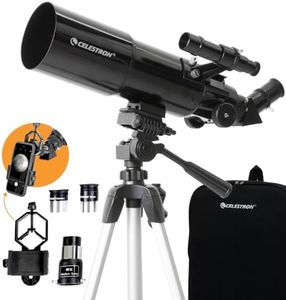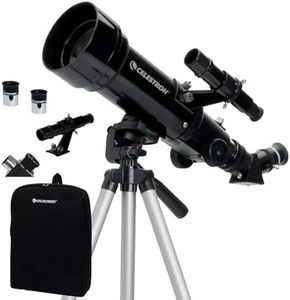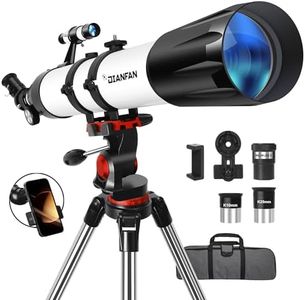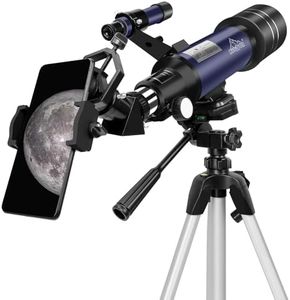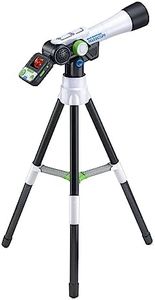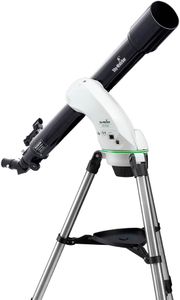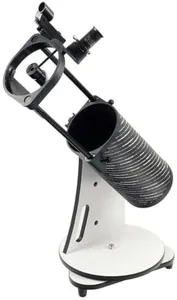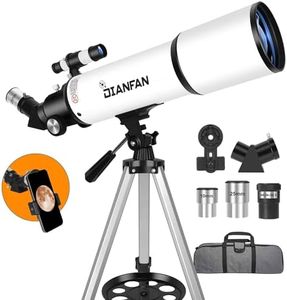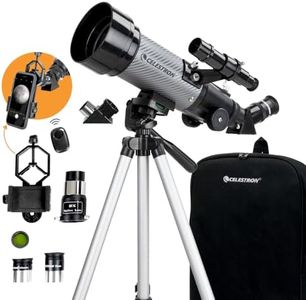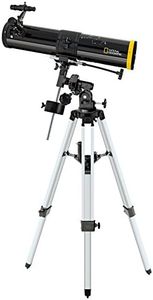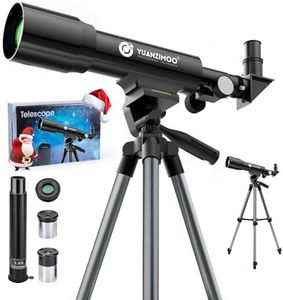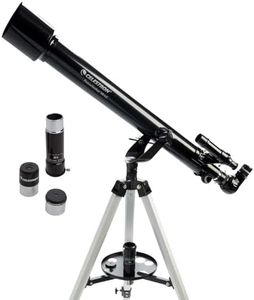We Use CookiesWe use cookies to enhance the security, performance,
functionality and for analytical and promotional activities. By continuing to browse this site you
are agreeing to our privacy policy
10 Best Kids Telescopes
From leading brands and best sellers available on the web.Buying Guide for the Best Kids Telescopes
Choosing a telescope for kids is about making the stargazing experience fun, engaging, and simple enough that young explorers feel encouraged, not frustrated. To find the best fit, consider how easy the telescope is to set up, use, and maintain, as well as how well it matches the interests and age of the child. It's important to look beyond just magnification, instead focusing on features that make astronomy accessible and enjoyable for beginners.Aperture SizeAperture size refers to the diameter of the telescope's main lens or mirror. This is a key factor because larger apertures can gather more light, allowing you to see fainter objects and produce sharper images. Apertures in entry-level kids’ telescopes usually range from about 50mm to 80mm (for refractors) or 76mm to 114mm (for reflectors). Smaller apertures are lighter and easier for kids to handle, making them suitable for quick, casual stargazing and brighter celestial objects like the moon. Medium apertures will show more detail on planets and can begin to show deep-sky objects, but may require a steadier hand or tripod. Choose based on your child’s age, strength, and interest—smaller for very young beginners, larger as their enthusiasm and skill grow.
Type of TelescopeThere are three main types: refractor, reflector, and compound. Refractors use lenses and are known for being sturdy and easy to maintain, making them good for kids who want a plug-and-play experience mainly for moon and planet viewing. Reflectors use mirrors, often have larger apertures for the price, and are better for viewing fainter deep-sky objects, but require occasional alignment. Compound telescopes combine both lens and mirror, offering versatility, but they can be heavier and more complex. For most children, a simple refractor or a basic reflector is the best starting point, depending on their ability to handle equipment and interest in exploring objects beyond the moon.
Mount TypeThe mount is what holds the telescope steady and allows you to aim it. The two common types are altazimuth and equatorial. An altazimuth mount moves up-down and left-right, making it intuitive and easy, especially for kids. An equatorial mount is designed to follow the motion of stars across the sky and is more complicated, often better for older kids with a real interest in astronomy. Stick to an altazimuth mount for younger children or beginners, and consider equatorial only if you’re ready for a small learning curve.
Magnification and EyepiecesMagnification is how much the telescope enlarges the view of an object. This depends on both the telescope and the eyepiece used. Higher isn’t always better—too much magnification can actually make the image blurry and hard to find. Kids’ telescopes often come with two eyepieces that offer a low and a medium level of magnification, ideal for viewing the moon, planets, or wide sections of the sky. Instead of focusing on the biggest number, look for a set that allows some choice, so young users can experiment to see what works best for their interests.
Ease of Use and SetupA critical but often overlooked factor is how simple the telescope is to assemble, move, and operate. For kids, the best telescope is one they can use with minimal help from adults. Lightweight, uncomplicated models that can be adjusted easily, even in the dark or with gloves, ensure frequent use. Look at reviews or product descriptions for clues that the telescope is meant for beginners or children.
PortabilityPortability is about how easy it is to carry and transport the telescope to different locations, whether it’s just the backyard or further afield. Smaller, lighter telescopes are easier for kids to handle and encourage spontaneous astronomy sessions, while large, heavy instruments may need adult assistance. Pick a size and weight suitable for the child's age and strength, so they feel excited to use it often.
